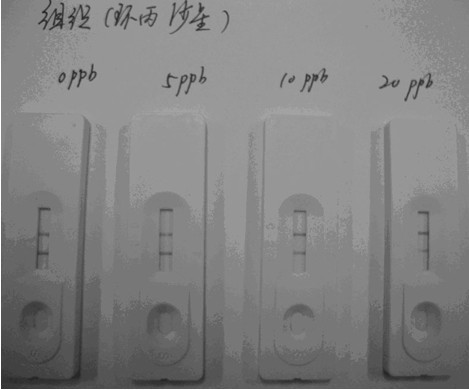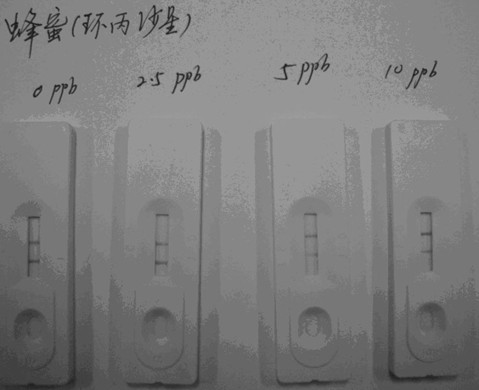Hybridoma cell strain capable of secreting monoclonal antibodies to quinolones and application of monoclonal antibodies thereof
A technology of hybridoma cell lines and quinolones, applied in the direction of microorganisms, analytical materials, biochemical equipment and methods, etc., to achieve the effect of strong specificity and high sensitivity
- Summary
- Abstract
- Description
- Claims
- Application Information
AI Technical Summary
Problems solved by technology
Method used
Image
Examples
Embodiment Construction
[0014] Hybridoma cells secreting monoclonal antibodies against fluoroquinolones were deposited in the General Microbiology Center of China Committee for the Collection of Microbial Cultures on November 28, 2011, address: No. 3, Yard No. 1, Beichen West Road, Chaoyang District, Beijing, The preservation number is CGMCC No.5608, and the classification is named: secreting fluoroquinolone-resistant monoclonal antibody hybridoma cells;
[0015] Hybridoma cell line secreting anti-quinolone monoclonal antibody ascites indirect ELISA titer up to 10 -7 Above, the antibody type and subclass are IgG1, kappa chain, the monoclonal antibody can be combined with quinolones ciprofloxacin, enrofloxacin, ofloxacin, danofloxacin, norfloxacin, enoxa Star, marbofloxacin, sarafloxacin and difloxacin have specific immune reactions.
[0016] The application of monoclonal antibodies against quinolones in the detection of such antibiotic residues in food is based on various immunological detection met...
PUM
 Login to View More
Login to View More Abstract
Description
Claims
Application Information
 Login to View More
Login to View More - R&D
- Intellectual Property
- Life Sciences
- Materials
- Tech Scout
- Unparalleled Data Quality
- Higher Quality Content
- 60% Fewer Hallucinations
Browse by: Latest US Patents, China's latest patents, Technical Efficacy Thesaurus, Application Domain, Technology Topic, Popular Technical Reports.
© 2025 PatSnap. All rights reserved.Legal|Privacy policy|Modern Slavery Act Transparency Statement|Sitemap|About US| Contact US: help@patsnap.com



